
|

|
|
Home Site Search Contact Us Subscribe
|
|
|
Book Review: Shedding Light on Concrete: Tadao Ando: Complete Works 1975-2010 by Philip Jodidio Photographic presentation of a poet of light and concrete triumphs over lackluster commentary. By Norman Weinstein June 8, 2010 This weighty coffee-table tome, if accidentally knocked off furniture, could maim a small dog, one like “Le Corbusier,” who happens to be Tadao Ando’s pet. This isn‘t mentioned frivolously – nor is it irrelevant to this magnificent, and magnificently flawed, catalogue raisonée of Ando’s architecture. An autodidact, Ando began his commitment to design at age 15 after reading Corbu rather than seeking a formal design education, and one way of considering the meaningfulness of Ando’s opus thus far is to treat his vision as Le Corbusier’s vision both tamed and allowed to run wild.
This review of Ando: Complete Works 1975-2010 (Taschen, 2010) begins with this tangent about Le Corbusier (and his canine version) because Philip Jodidio’s commentaries barely transcend dutifully noting Le Corbusier’s catalytic impact on Ando finding his own identity. There is nothing markedly incorrect or sloppy in Jodidio’s comments – they are the same that you can read in other articles and monographs. What troubles is the missed opportunity to get under the surfaces of Ando’s art.
The copious photographs and drawings alone justify the book’s purchase, with the large 12-by-15-inch format ideal for conveying both monumentality and details. With the heft of the book in hand, there’s the opportunity to see gorgeous photo spreads of 50 built and planned projects, with the rest of Ando’s works contained in black-and-white thumbnails no e-book reader should carp about discerning.
The 20 photographers, the real “authors” of this colossal volume, should be roundly applauded for evoking the dance of light across concrete that is the heart of Ando’s art. Derived from Le Corbusier, and filtered through Louis Kahn’s influence, Ando makes his mark apart from his early mentors by exercising those facets of Japanese aesthetic sensibility most ignored by fey Western advocates of Japonisme. Ando’s Japanese aesthetics is not the stuff of delicate tea rituals; his is the Japanese sensibility that spawned martial arts and Noh theater. There’s nothing of the architect as affected aesthete here, nothing stereotypically anemically academic. He’s earned his keep in his youth as a professional boxer and truck driver, and those high-impact, athletic professions left their mark in these earthy works. His artistry with concrete – 15-foot-thick walls of it that nevertheless create a sense of spiritual lightness and buoyancy – substantiates the claim of Ando as a post-Corbusier architect without qualms about wildly amplifying as well as softly refining the concrete proclivities of his teacher.
I would suggest bypassing Jodidio’s workmanlike but uninspired introduction and going directly to the photographs and drawings as you please. After doing so with pleasure at every image, I found myself most often returning to the Chichu Art Museum that has among its small collection a Monet “Water Lilies” and three works by the light/earthworks artist James Turrell. Largely underground, Ando has crafted a museum where indirect light from Nature continually surprises, and perhaps even sensually caresses visitors, as they meditate on this museum-based community of artists of light nested in an ideal house of light.
This is as close to capturing Tadao Ando’s magic as any book is likely to achieve, my reservations about the commentary notwithstanding.
Norman Weinstein writes about architecture and design for Architectural Record and The Christian Science Monitor, and is the author of “Words That Build” – an exclusive 21-part series published by ArchNewsNow.com – that focuses on the overlooked foundations of architecture: oral and written communication. He consults with architects and engineers interested in communicating more profitably. You can reach him at nweinste@mindspring.com.
More by Weinstein:
Celebratory Meditations on SANAA Winning the Pritzker Prize
Op-Ed: Life After Ada: Reassessing the Utility of Architectural
Criticism
Book Review: Sage
Architectural Reflections from Architecture's "Athena": Denise Scott
Brown's "Having Words" distills a lifetime of theorizing and practice
into practical and succinct guidance for thriving through difficult times
Book Review: Keeping
the Architectural Profession Professional: "Architecture from the Outside
In: Selected Essays by Robert Gutman" celebrates Gutman's legacy as
invaluable outsider
Book Review:
"Design through Dialogue: A Guide for Clients and Architects," by
Karen A. Franck and Teresa von Sommaruga Howard
Twilight Visions: Vintage Surrealist Photography Sheds
New Light on Architecture
Best
Architecture Books of 2009
Book Review: "Gunnar Birkerts: Metaphoric Modernist" by Sven Birkerts and Martin Schwartz A major architect in the history of Modernism finally receives recognition – and sundry asides about why Modernism never exited.
Book Review: "Urban
Design for an Urban Century: Placemaking for People," by Lance Jay Brown,
David Dixon, and Oliver Gillham
Book Review:
"Everything Must Move: 15 Years at Rice School of Architecture
1994-2009"
Book Review: A Subversive Book Every Architect Needs:
"Architect's Essentials of Negotiation" by Ava J. Abramowitz
Book Review: A Perspective from One Elevation: "Conversations With Frank Gehry" by Barbara Isenberg Gehry's conversations offer portraits of an astute listener as well as talker, an architect as aware of his flaws and limitations as of his virtues.
Best Architecture Books of 2008
Book Review: You've Got to Draw the Line Somewhere A review of Drafting Culture: a Social History of Architectural Graphic Standards by George Barnett Johnston
Book Review: "NeoHooDoo: Art for a Forgotten Faith," edited by Franklin Sirmans Sharpen your pencils - and get ready to do a NeoHooDoo shimmy.
|
(click on pictures to enlarge) 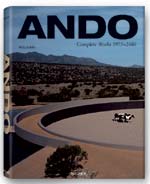 Guido Mocafico Front cover image: House and Stables for Tom Ford and Richard Buckley, North Galisteo, New Mexico 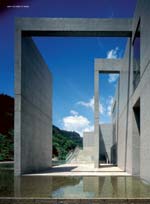 Mitsuo Matsuoka Nariwa Museum, Okayama, Japan 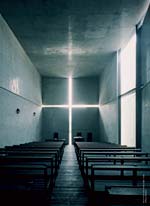 Mitsuo Matsuoka Church of the Light, Ibaraki, Osaka, Japan 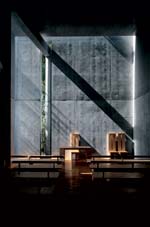 Tadao Ando Church of the Light - Sunday School, Ibaraki, Osaka, Japan 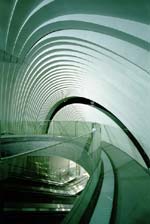 Mitsuo Matsuoka Tokyu Toyoko-Line Shibuya Station, Shibuya-Ku,Tokyo |
© 2010 ArchNewsNow.com